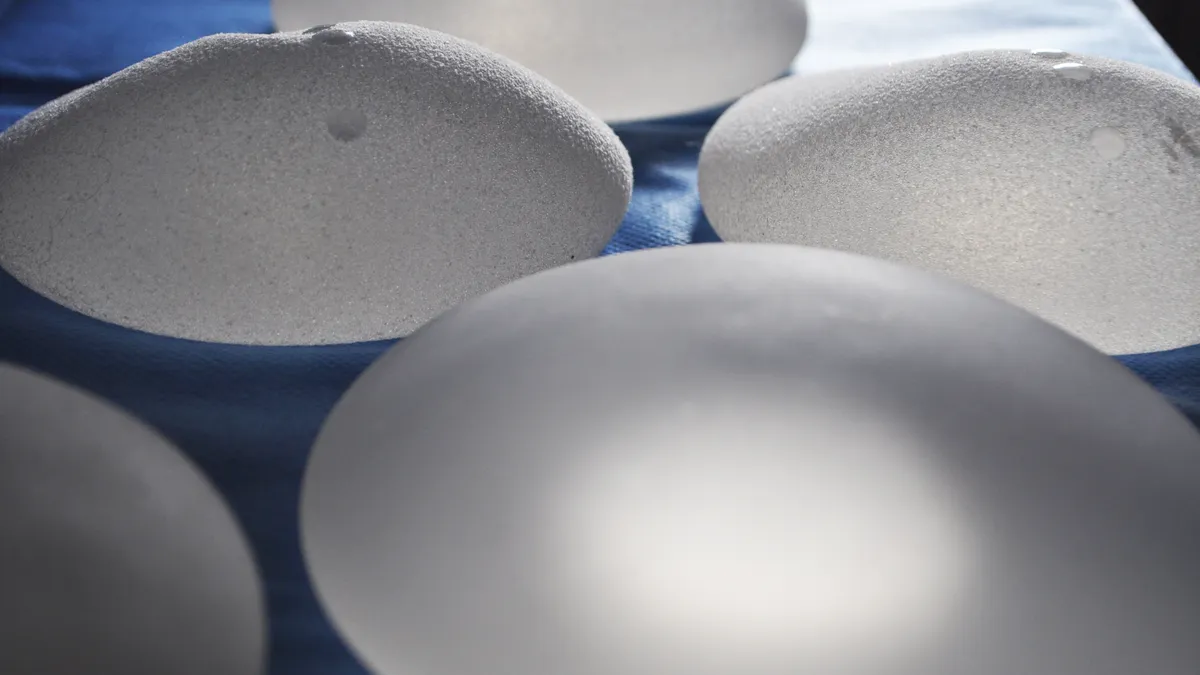Dive Brief:
- FDA's device center said Wednesday it is aware of at least nine U.S. patients dying from a form of cancer regulators worldwide have increasingly linked with breast implants.
- The disease in question is not breast cancer but a form of non-Hodgkin lymphoma: Breast Implant-Associated Anaplastic Large Cell Lymphoma, or BIA-ALCL. The cancer tends to be found in scar tissue and fluid around an implant, but can sometimes spread to other parts of the body, according to FDA.
- Binita Ashar, CDRH's director of surgical devices, said as of September 2018, FDA received 660 medical device reports indicating 457 unique cases since 2010. The updated data comes weeks before a March FDA advisory committee meeting is set to examine known breast implant risks, with particular focus on capsular contracture and implant rupture in addition to the lymphoma.
Dive Insight:
It's been a tumultuous six months for breast implant manufacturers. The products, particularly the textured variety, have over time been associated with varying certainty to autoimmune and connective tissue diseases, reproductive problems and breast and skin cancers.
A large manufacturer of breast implants, Allergan, suffered internationally in December when France issued a mandatory recall of textured breast implants, and shortly thereafter Allergan lost its CE mark. The company ceased European sales and reported last week its international sales fell 74% year over year during its fourth quarter. Allergan stock was down slightly Thursday morning.
In September, a MD Anderson Cancer Center study suggested a high-risk link between implants and rheumatoid arthritis and scleroderma. FDA questioned the validity of the study and defended its own history of advising the public about risks associated with the devices.
FDA first warned of a possible association between breast implants and development of anaplastic large cell lymphoma in 2011, but lacked strong evidence linking the two. By 2016, the World Health Organization officially tied the cancer to the devices.
Estimated incidence rates of the lymphoma now range from a high of one per 3,817 patients to a low estimate of one in 30,000, according to FDA. Textured implants have been shown to more frequently associated with the disease than those that are smooth, though the surface type of implants is not always reported at time of diagnosis.
Of the 660 adverse event reports submitted to FDA, Ashar said 246 have come in the last year. FDA couched some of the spike on increased awareness of the disease.
"Given the agency’s continued efforts to communicate with stakeholders about BIA-ALCL risks and our work to encourage patients and providers to file MDRs with the agency, these types of increases in the MDRs are to be expected and may include past cases that were not previously reported to the FDA," Ashar wrote.
In conjunction with Ashar's statement, CDRH's chief medical officer William Maisel sent a letter to healthcare providers updating them with FDA's latest analysis.
"Though the number of identified cases of BIA-ALCL is small compared to the estimated 1.5 million patients who receive breast implants worldwide every year, confirmed data and published information reviewed to date suggests that patients with breast implants have an increased risk of BIA-ALCL," Maisel's note said.
In addition to collecting data from adverse event reports, FDA said it continuously reviews data from a patient registry in collaboration with the American Society of Plastic Surgeons. Still, the agency said that imperfect reporting of diagnoses and varying levels of detail across reports have made it difficult to conclusively trace rates of the disease with particular types or brands of implants.











